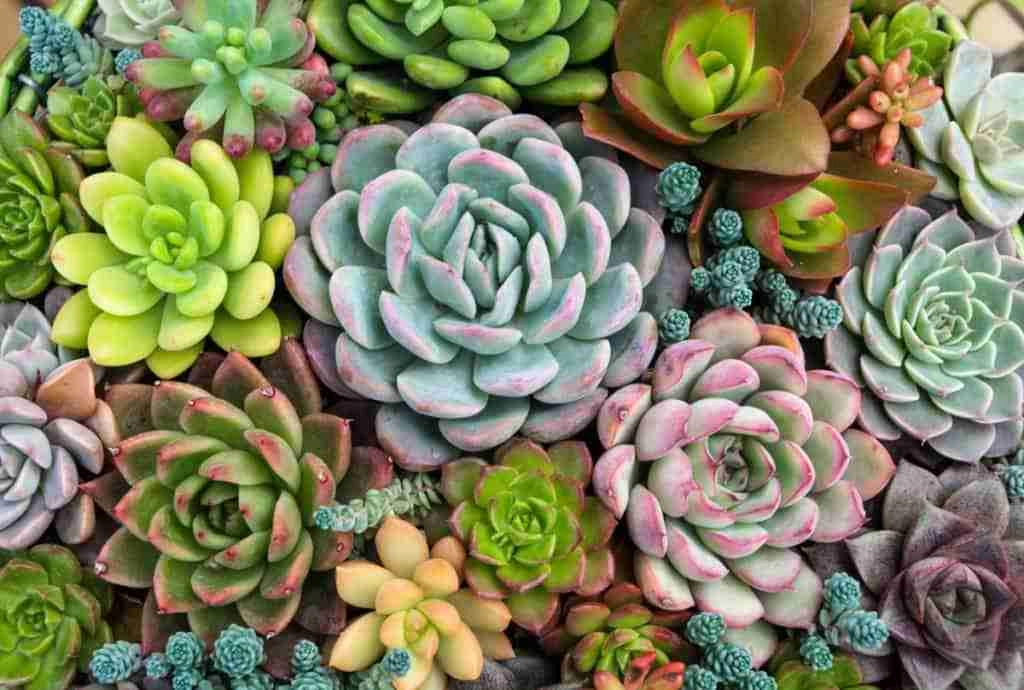
Most know that succulents are known to thrive in the summer sun. But what many plant lovers wonder about is whether succulents can survive the winter. Different factors influence a succulent’s survival, so the answer is not black and white.
Many succulents can survive the winter. Factors that affect survival include the climate of the region (how long and harsh the season is) and the succulent species. Succulents may require protection if growing outdoors, and some must be moved indoors to prevent damage from the winter elements.
Finding out whether your succulent can survive the winter doesn’t have to be difficult. Read on to discover everything you need to know about succulents in the winter and how to help your plant survive to spring.
If you wonder whether succulents can grow in shade or not, I wrote a whole article that I encourage you to read.
Can All Succulents Survive Winter?
Succulents are hardy plants that can withstand a variety of conditions. They are popular for their aesthetic appeal and the fact that they are relatively easy to take care of. With so many people getting succulents for their homes and gardens, concern about whether they can survive winter is growing.
There are two important factors that determine if succulents can survive the winter, including the succulent variety and the severity of the winter weather.
1- The Succulent Variety
The first thing to know is that some species can withstand harsh winters and come back bigger and better in the spring. You must know which type of succulent you have when considering how it will do in the winter.
There will be more information about which succulent varieties can handle winter later on in the article.
2- The Severity of the Winter Weather
The second thing to consider is the climate and just what kind of winter the succulent will face. For instance, most succulents will survive the mild winter in sunny southern California.
However, it would be a different case for a succulent growing outdoors during a chilling winter in Canada. Those succulents would most likely require some help to make it through the season.
Which Succulent Varieties Survive Winter?
Some succulents are better suited for the colder months. They can do well in freezing temperatures and may not require much attention to keep them alive.
Here is a quick list of three types of succulent varieties known for their hardiness:
- Sempervivum: These succulents, whose name in Latin means “always living,” are charming succulents that grow in beautiful rosettes low to the ground. They are commonly green but can also grow with purple, red, or even blue-tinted leaves. These are known to be cold and hardy and can survive in extremely low temperatures.
- Sedum: This common succulent grows thick short leaves that resemble jelly beans and can grow in a variety of colors, shapes, and sizes. Some grow tendrils that spread out horizontally and are great for ground cover in outdoor gardens. Others grow vertically and give height to gardens. They are drought-tolerant as well as resistant to ice and snow.
- Delosperma: This resilient succulent is nicknamed the “ice plant.” Outdoors can grow in high elevations and have been found on mountainsides. They produce trailing green foliage that blooms brightly in springtime. This flowering succulent is a bit rarer than the others and may cost more at your local plant shop or online retailer.
Ask your local nursery for these by name when shopping for plants that will do well in an outdoor garden or patio area. These are just a few of the succulents that are known to survive the winter weather outdoors.
Where Do Succulents Grow Best in the Winter?
Most succulents are labeled with hardiness zones 3-9. Each zone is defined by the average annual low temperature. These zones help to classify whether a plant is likely to thrive in a certain location.
For instance, zone 3 is an area where the temperature may drop below 30 degrees Fahrenheit in the winter. In zone 9, the average lowest winter temperature will be around 20-30 degrees Fahrenheit. All of the other zones fit in between these two extremes.
As you can see, there is a wide range of climates where succulents can grow well.
When purchasing a succulent, it will likely be labeled with a hardiness zone to tell gardeners and growers how a species will do in a particular climate.
If you live in America or Canada, Natural Resources Canada’s map shows where the hardiness regions are located. It pays to know what zone you live in.
If you’ve misplaced the hardiness zone label for your succulent, you can do a simple Google search of your succulent species to figure out the hardiness zone.
Succulents growing in a zone too cold for them require special attention to survive the winter months.
Here are some steps to take:
- Cover outdoor succulents to protect them from the elements. Secure a plastic tarp over the succulents to shield them from the ice, snow, and wind.
- Spread a 6 to 8-inch layer of straw or wood chips over the garden to create a layer of insulation
- For potted succulents, consider bringing them indoors when the temperatures fall below 30 degrees Fahrenheit.
How to Bring Succulents Indoors for Winter?
Depending on the succulent variety and winter weather, it may be necessary to bring the plants out of the cold. When moving plants inside for the season, there are three things you must consider when it comes to your succulent’s well-being, and they include:
- Pest control
- Water
- Sunlight
The following sections will go over these three variables in detail.
1- Pest Control
You should clean your succulents and make sure there are no pests in the soil or on the leaves. Insects can feed on plants causing harm and making them look damaged. Spray your plants down with insecticidal soap or soak the whole plant pot in a mild soap solution. This can be done two to three weeks before the transition to indoors.
After prepping the plant, it might be a good idea to bring the succulents in and place them in clear plastic bins. Check the bins every couple of days to see if any bugs have exited the planter.
2- Water
While indoors, the succulents should be watered very little, if at all. Overwatering can cause root rot by making the soil too moist. Furthermore, watering encourages the succulent to grow.
While indoors for the winter, it is better to discourage growth because succulents can become “leggy” or lose shape. It is preferable for succulents to go into “dormancy” or a period of inactivity. Succulents may need only a sip a month to keep the roots from drying out.
3- Sunlight
Place plants near a window to maintain adequate sunlight and keep them from dying. Grow lights are an option and can be purchased for $50 to $200 if there are multiple succulents that need more lighting or more space.
Many succulents go into a period of rest in the winter, so don’t worry about their appearance in the winter months. Your succulent will look much better once spring rolls around.
What to read next:
- ZZ Plant Leaves Turning Yellow (5 Reasons And how to fix them)
- 5 Succulent Christmas Ornament Ideas For Diy Enthusiasts!
- Why Is My Aloe Vera Plant Drooping: 8 Causes And How to Fix Them!
Final Thoughts
Now you know that many succulent varieties can survive the winter. The big takeaway is that it is important to know your succulent and how the species tolerates certain climates. Then you can take the appropriate steps to help your succulent survive frigid temperatures.
With some knowledge and effort, it is possible for succulent owners to help their succulents survive the winter months.

